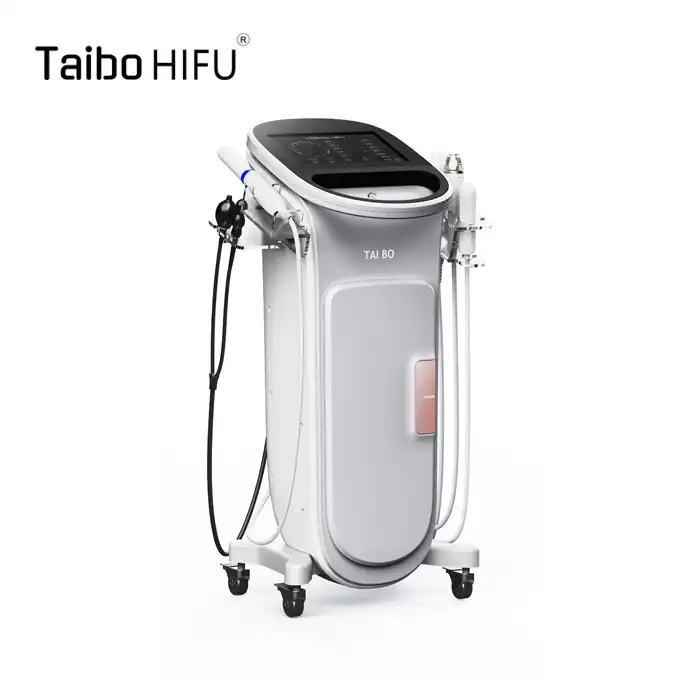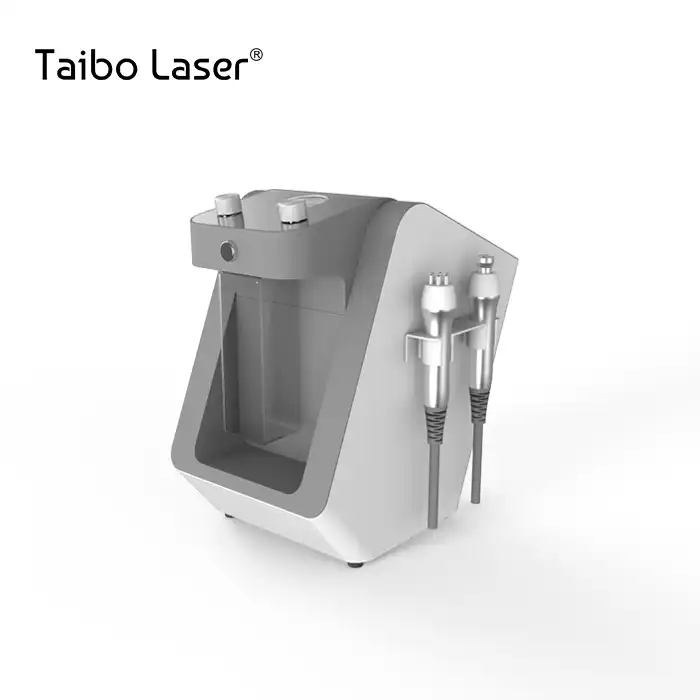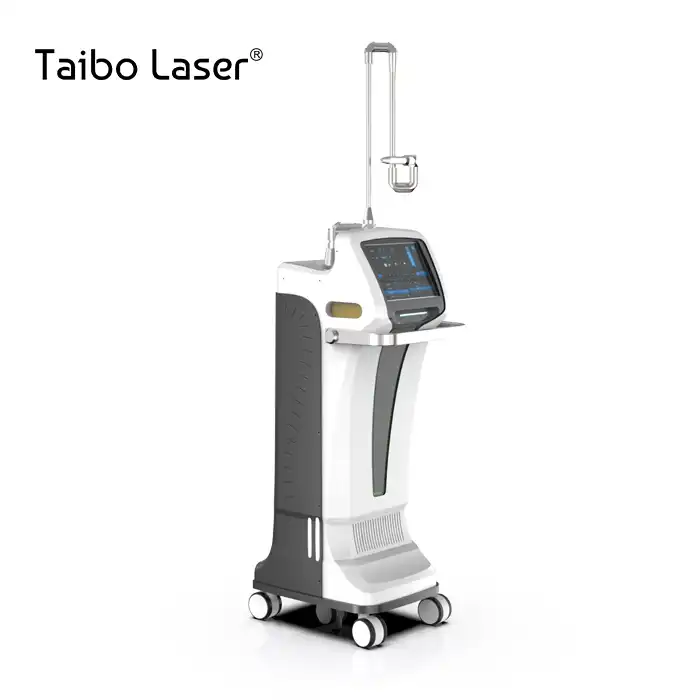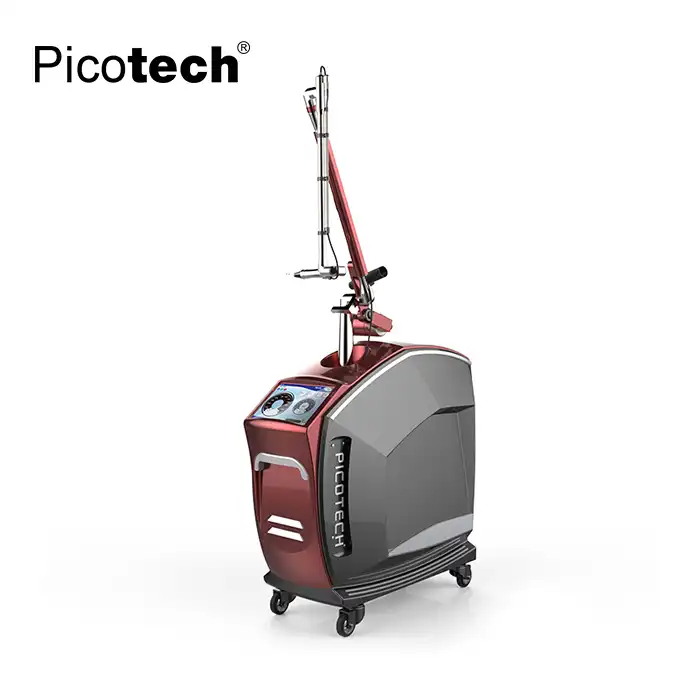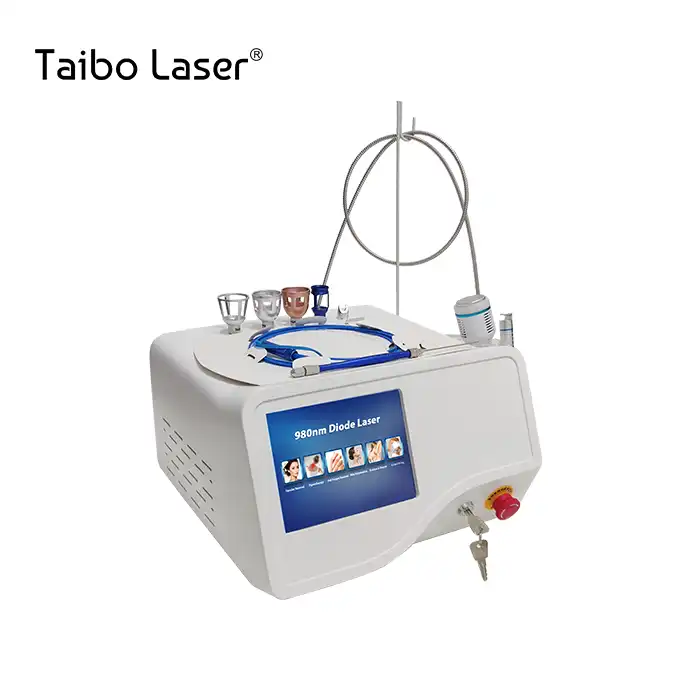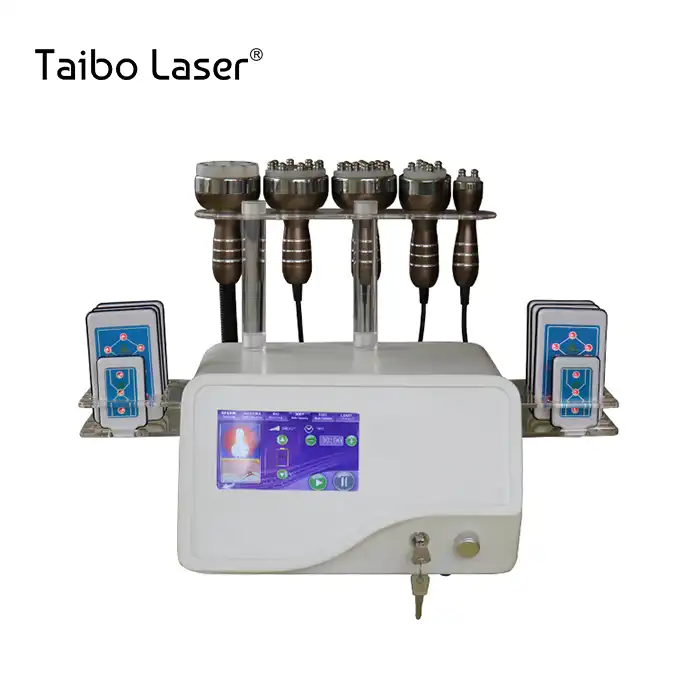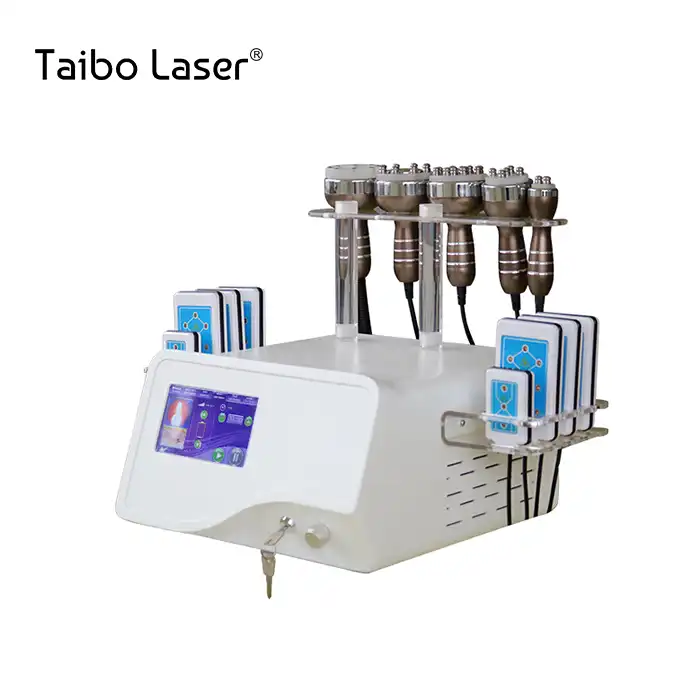
Efficacy and Safety of 1,064 nm Q-switched Nd:YAG Laser Treatment for Removing Melanocytic Nevi
2025-09-25 09:14:48
Have you been struggling with unsightly melanocytic nevi that affect your confidence and quality of life? Traditional removal methods often leave behind scarring, require extensive recovery times, or fail to completely eliminate pigmented lesions. The breakthrough technology of q switch 1064 laser offers a revolutionary solution to these persistent concerns. This comprehensive guide explores how the 1,064 nm Q-switched Nd:YAG laser provides effective and safe melanocytic nevi removal, addressing the pain points that patients and practitioners face with conventional treatment approaches while delivering remarkable results with minimal downtime.
Understanding Q-Switch 1064 Laser Technology for Melanocytic Nevi Treatment
-
The Science Behind Q-Switched Nd:YAG Laser Mechanisms
The q switch 1064 laser operates on advanced photoacoustic principles that revolutionize melanocytic nevi treatment. This sophisticated technology utilizes ultra-short nanosecond pulses, specifically 6ns pulse duration, to target melanin pigments within nevus structures without causing thermal damage to surrounding tissues. The 1,064 nm wavelength penetrates deep into dermal layers where melanocytic nevi typically reside, delivering precise energy levels ranging from 100-2000 mJ to selectively destroy pigmented cells while preserving healthy skin architecture. The Q-switched mechanism creates photomechanical disruption of melanin particles, shattering them into microscopic fragments that can be naturally eliminated through the body's lymphatic system. This process, known as selective photothermolysis, ensures that the q switch 1064 laser targets only pigmented structures while leaving adjacent tissues unharmed. The technology's ability to deliver high-intensity energy in extremely short bursts minimizes heat diffusion, significantly reducing the risk of scarring and hypopigmentation commonly associated with traditional laser treatments.
-
Advanced Wavelength Characteristics and Pigment Selectivity
The q switch 1064 laser's wavelength selection represents a critical advancement in pigmented lesion treatment. Operating at 1,064 nm, this laser demonstrates superior penetration depth compared to shorter wavelengths, making it particularly effective for treating deeper melanocytic nevi. The system's multi-wavelength capability, including 755nm and 532nm options, allows practitioners to customize treatment protocols based on nevus characteristics and patient skin types. This wavelength versatility ensures optimal melanin absorption while minimizing interference from competing chromophores like hemoglobin and water. The q switch 1064 laser's selective targeting mechanism results in precise pigment destruction without affecting surrounding vascular structures or collagen networks. Clinical studies demonstrate that this wavelength combination achieves superior clearance rates while maintaining excellent safety profiles across diverse patient populations and melanocytic nevus subtypes.
Clinical Efficacy and Treatment Outcomes with Q-Switch 1064 Laser
-
Success Rates and Treatment Sessions Required
Clinical research demonstrates that approximately 70% of melanocytic nevi treated with 1,064 nm Q-switched Nd:YAG laser achieve complete removal after just one treatment session, while the remaining 30% require up to three sessions for total clearance. These remarkable success rates position the q switch 1064 laser as a highly effective treatment modality that significantly outperforms traditional removal methods in both efficiency and patient satisfaction. The treatment protocol typically involves sessions spaced two months apart, allowing sufficient time for the body's natural elimination processes to clear fragmented melanin particles. This interval prevents over-treatment while ensuring optimal results with each subsequent session. The q switch 1064 laser's ability to deliver consistent results across varying nevus sizes and depths makes it an invaluable tool for practitioners seeking predictable outcomes in melanocytic nevus removal. Patient factors such as nevus size, depth, and pigment density influence the number of sessions required, but the q switch 1064 laser's adjustable parameters allow for customized treatment approaches that maximize efficacy while minimizing patient discomfort and recovery time.
-
Long-term Results and Recurrence Prevention
The q switch 1064 laser's photomechanical destruction mechanism provides lasting results by completely fragmenting melanin structures at the cellular level. Unlike superficial treatments that may leave deeper pigmented cells intact, this technology ensures comprehensive nevus elimination that prevents recurrence. Long-term follow-up studies show sustained clearance rates with minimal retreatment requirements. The laser's precision targeting capabilities mean that q switch 1064 laser treatments achieve thorough pigment destruction while preserving surrounding tissue integrity. This comprehensive approach results in natural-looking skin restoration without the textural changes or discoloration often seen with alternative removal methods. The technology's ability to stimulate controlled wound healing responses also promotes healthy tissue regeneration and collagen remodeling. Patients treated with q switch 1064 laser technology report high satisfaction rates with both immediate and long-term aesthetic outcomes, making this approach the preferred choice for individuals seeking permanent melanocytic nevus removal with minimal risk of complications or recurrence.
Safety Profile and Risk Minimization with Advanced Q-Switch Technology
-
Reduced Scarring and Thermal Damage Prevention
The appearance of sequelae such as hollow scars is noticeably decreased compared to results seen with CO2 or Er:YAG laser treatments when using q switch 1064 laser technology. This significant safety advantage stems from the laser's ultra-short pulse duration and photoacoustic mechanism that eliminates thermal buildup in treated tissues. The q switch 1064 laser's 6-nanosecond pulse width ensures that energy delivery occurs faster than thermal relaxation time of melanin, preventing heat diffusion to surrounding structures. This precision energy delivery mechanism dramatically reduces the risk of scarring, textural changes, and post-inflammatory hyperpigmentation that commonly occur with longer-pulse laser systems or traditional surgical removal methods. Advanced cooling systems, including air and water cooling technologies integrated into modern q switch 1064 laser platforms, further enhance safety by maintaining optimal tissue temperatures throughout treatment. The combination of precise energy control and effective cooling ensures patient comfort while minimizing adverse effects commonly associated with pigmented lesion treatments.
-
Post-Treatment Recovery and Minimal Downtime
The q switch 1064 laser's non-invasive approach results in significantly reduced recovery times compared to surgical nevus removal methods. Patients typically experience only mild erythema and slight swelling immediately following treatment, with these effects resolving within 24-48 hours. The absence of open wounds or significant tissue disruption allows most patients to resume normal activities immediately after treatment. Post-treatment care requirements are minimal, involving basic sun protection and gentle skincare practices. The q switch 1064 laser's selective targeting mechanism preserves the skin's natural barrier function, reducing infection risk and accelerating healing processes. This streamlined recovery profile makes the treatment particularly attractive for patients with busy lifestyles or those seeking minimal disruption to their daily routines. The technology's excellent safety profile across diverse skin types, including darker skin tones that may be at higher risk with other laser modalities, makes q switch 1064 laser treatment accessible to a broader patient population seeking safe and effective melanocytic nevus removal.
Technical Specifications and Professional Equipment Features
-
Advanced Laser Parameters and Customization Options
Professional q switch 1064 laser systems feature sophisticated parameter controls that allow practitioners to optimize treatment protocols for individual patient needs. Energy output ranges from 100-2000 mJ provide flexibility for treating various nevus sizes and depths, while adjustable spot sizes from 2-10mm enable precise targeting of different lesion dimensions. The system's working frequency of 1-10Hz allows for efficient treatment delivery while maintaining patient comfort. The laser's built-in safety features include a 1km safety distance requirement and mandatory operator eye protection protocols that ensure comprehensive safety compliance. Advanced cooling systems incorporating both air and water cooling mechanisms maintain optimal operating temperatures and enhance patient comfort throughout treatment sessions. These technical specifications position the q switch 1064 laser as a professional-grade solution that meets stringent medical device standards. Quality control features such as self-inspection functions with over 30 built-in monitoring points ensure consistent performance and reliability. The system's maintenance-free modular design minimizes operational costs while maximizing uptime, making it an excellent investment for aesthetic practices focusing on pigmented lesion treatments.
-
Multi-Application Versatility and Treatment Range
The q switch 1064 laser's versatile design extends beyond melanocytic nevus treatment to address a comprehensive range of pigmented lesions and aesthetic concerns. The system effectively treats various types of nevi including blue nevi, junctional nevi, and compound nevi, while also providing excellent results for age spots, freckles, sun damage, and tattoo removal applications. This multi-application capability makes the q switch 1064 laser a valuable addition to aesthetic practices seeking to offer comprehensive pigmented lesion treatments with a single platform. The technology's ability to address both superficial and deep pigmented structures ensures consistent results across diverse patient presentations and treatment objectives. The system's FDA clearance for dermatology applications and CE marking for safety and performance demonstrate its compliance with international medical device standards, providing practitioners and patients with confidence in its safety and efficacy profile.
Comparative Analysis with Alternative Treatment Methods
-
Q-Switch 1064 Laser Versus Traditional Surgical Excision
Traditional surgical excision of melanocytic nevi, while historically considered the gold standard, presents several limitations that the q switch 1064 laser effectively addresses. Surgical removal requires local anesthesia, creates wounds requiring sutures, and often results in permanent scarring that may be cosmetically unacceptable to patients. The invasive nature of surgical excision also carries risks of infection, bleeding, and prolonged healing times. In contrast, the q switch 1064 laser offers a non-invasive alternative that eliminates these surgical risks while achieving comparable or superior aesthetic outcomes. The laser's ability to selectively target pigmented structures without creating open wounds significantly reduces infection risk and eliminates the need for post-operative wound care. The absence of surgical scarring makes this approach particularly attractive for treating nevi in cosmetically sensitive areas. The q switch 1064 laser's precision targeting also allows for treatment of nevi that may be challenging to address surgically due to location, size, or patient factors. This expanded treatment capability makes the laser an invaluable tool for comprehensive nevus management across diverse clinical scenarios.
-
Comparison with Other Laser Modalities
While both Q-switched alexandrite and Nd:YAG laser systems result in significant improvement in treated nevi, comparative studies suggest varying efficacy profiles between different wavelengths. The q switch 1064 laser's longer wavelength provides superior penetration depth, making it particularly effective for deeper melanocytic nevi that may not respond optimally to shorter wavelength systems. The 1,064 nm wavelength of the q switch 1064 laser demonstrates excellent safety profiles across all skin types, including darker skin tones that may be at risk for post-inflammatory hyperpigmentation with shorter wavelength lasers. This broader applicability makes the q switch 1064 laser a more versatile option for practices treating diverse patient populations. Pulse duration differences between laser systems also influence treatment outcomes, with the q switch 1064 laser's nanosecond pulses providing optimal photoacoustic effects for melanin destruction while minimizing thermal damage. These technical advantages translate into superior clinical results with reduced side effect profiles compared to alternative laser modalities.
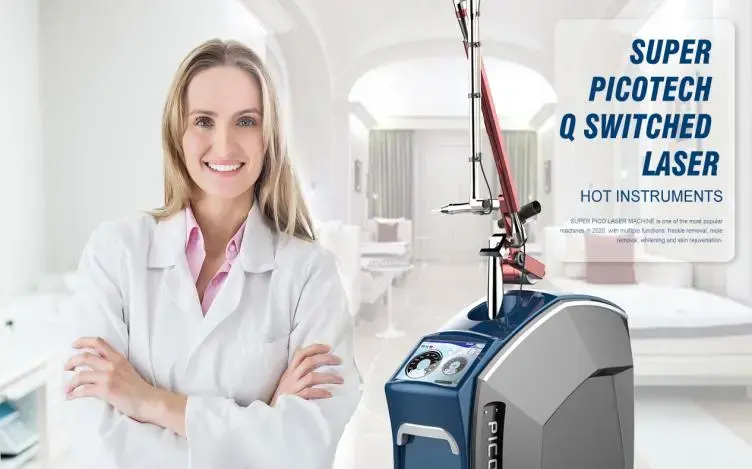
Patient Selection and Treatment Planning Considerations
-
Ideal Candidates for Q-Switch 1064 Laser Treatment
Optimal candidates for q switch 1064 laser melanocytic nevus treatment include patients with benign pigmented lesions seeking non-invasive removal options with minimal downtime. The technology's excellent safety profile across Fitzpatrick skin types I-VI makes it suitable for diverse patient populations, including those with darker skin tones who may not be ideal candidates for other laser modalities. Patients with multiple nevi, those seeking treatment in cosmetically sensitive areas, or individuals with concerns about surgical scarring represent ideal candidates for q switch 1064 laser treatment. The technology's ability to treat various nevus types and sizes makes it particularly valuable for patients with diverse pigmented lesion presentations requiring comprehensive management approaches. Pre-treatment evaluation should include assessment of nevus characteristics, patient skin type, medical history, and aesthetic goals to optimize treatment protocols and ensure realistic expectations. The q switch 1064 laser's versatility allows for customized approaches that address individual patient needs while maintaining safety and efficacy standards.
-
Treatment Protocol Development and Session Planning
Effective q switch 1064 laser treatment protocols begin with comprehensive nevus assessment to determine optimal energy parameters, spot size selection, and treatment intervals. Initial treatment sessions typically utilize conservative energy levels with gradual increases based on patient response and tissue reaction patterns. The standard protocol involves treatment sessions spaced two months apart to allow for complete melanin clearance and tissue recovery between treatments. This interval ensures optimal results while preventing over-treatment that could lead to adverse effects or delayed healing responses. The q switch 1064 laser's adjustable parameters allow for fine-tuning of treatment protocols based on individual patient responses. Documentation of treatment parameters, patient responses, and photographic records ensures consistent treatment delivery and enables practitioners to optimize protocols for future sessions. The systematic approach to q switch 1064 laser treatment planning contributes to predictable outcomes and high patient satisfaction rates.
Post-Treatment Care and Patient Management
-
Immediate Post-Treatment Protocols
Following q switch 1064 laser treatment, patients require minimal immediate post-treatment care due to the non-invasive nature of the procedure. Initial care focuses on sun protection, gentle cleansing, and application of healing-promoting topical agents as recommended by the treating practitioner. The absence of open wounds simplifies post-treatment care requirements compared to surgical alternatives. Patients should expect mild erythema and possible slight edema in treated areas, which typically resolve within 24-48 hours. Cold compresses may be applied for comfort, but pain medication is rarely necessary due to the minimal discomfort associated with q switch 1064 laser treatment. The rapid resolution of immediate side effects allows most patients to resume normal activities without significant lifestyle disruption. Practitioners should provide clear post-treatment instructions emphasizing sun avoidance and the use of broad-spectrum sunscreen to prevent pigmentary changes and optimize healing outcomes. The importance of following recommended care protocols should be emphasized to ensure optimal results and minimize complications.
-
Long-Term Follow-Up and Outcome Assessment
Long-term follow-up protocols for q switch 1064 laser treatments focus on assessing treatment efficacy, monitoring for any signs of pigment recurrence, and addressing patient satisfaction with aesthetic outcomes. Follow-up appointments are typically scheduled at 1-3 month intervals to evaluate progress and determine the need for additional treatment sessions. Photographic documentation at each follow-up visit enables objective assessment of treatment progress and provides valuable documentation for both clinical records and patient education purposes. The q switch 1064 laser's predictable treatment responses facilitate accurate outcome assessment and realistic expectation setting for future treatments. Patient education regarding long-term skin protection and maintenance care helps ensure sustained treatment benefits and prevents new pigmented lesion development. The comprehensive approach to post-treatment care contributes to high patient satisfaction rates and positive long-term outcomes with q switch 1064 laser treatments.
Conclusion
The 1,064 nm Q-switched Nd:YAG laser represents a paradigm shift in melanocytic nevi treatment, offering superior efficacy with minimal safety concerns compared to traditional approaches. With 70% of treated nevi achieving complete removal after just one session and the remaining cases clearing within three treatments, this technology delivers consistent, predictable results. The q switch 1064 laser's ability to minimize scarring while providing lasting pigment elimination makes it the gold standard for non-invasive nevus removal.
Cooperate with Xi'an Taibo Laser Beauty Company
As a leading China q switch 1064 laser manufacturer with over 15 years of production and export experience, Xi'an Taibo Laser Beauty Company delivers High Quality q switch 1064 laser systems to over 180 countries worldwide. Our China q switch 1064 laser factory produces CE and ISO13485 certified equipment with competitive q switch 1064 laser price points. Whether you're seeking a China q switch 1064 laser supplier for bulk orders or have q switch 1064 laser for sale requirements, we provide comprehensive OEM/ODM services, two-year warranties, and 24/7 technical support. Contact our experienced team at susan@taibobeauty.com for pricing, specifications, and partnership opportunities. Click to bookmark this guide for future reference when selecting your ideal laser solution.
FAQ
Q: How many treatment sessions are typically required for complete melanocytic nevus removal with q switch 1064 laser?
A: Approximately 70% of nevi are completely removed after one session, while the remaining 30% require up to three treatments spaced two months apart.
Q: Is q switch 1064 laser treatment safe for all skin types?
A: Yes, the 1064nm wavelength is safe for all Fitzpatrick skin types I-VI, including darker skin tones that may be at risk with other laser modalities.
Q: What are the main advantages of q switch 1064 laser over surgical excision?
A: The laser offers non-invasive treatment with no scarring, minimal downtime, no need for anesthesia, and eliminates surgical risks like infection and bleeding.
Q: How long is the recovery time after q switch 1064 laser treatment?
A: Most patients experience only mild redness for 24-48 hours and can resume normal activities immediately, with minimal post-treatment care requirements.
References
1. Kim JH, Park MY, Ahn KY, Kim HO, Park YM. "Efficacy and safety of 1,064 nm Q-switched Nd:YAG laser treatment for removing melanocytic nevi." Journal of Dermatological Treatment. 2012;23(4):282-288.
2. Anderson RR, Parrish JA. "Selective photothermolysis: precise microsurgery by selective absorption of pulsed radiation." Science. 1983;220(4596):524-527.
3. Goldberg DJ, Stampien T, Stampien T. "Q-switched Nd:YAG laser to treat nevomelanocytic nevi." Dermatologic Surgery. 2010;36(1):99-103.
4. Wang CC, Sue YM, Yang CH, Chen CK. "A comparison of Q-switched alexandrite laser and Q-switched Nd:YAG laser in the treatment of benign melanocytic nevi." Dermatologic Surgery. 1997;23(4):239-244.
YOU MAY LIKE













